We love the VW Mk1 Golf for its purity. Not so good is the fact that its still sharp looking body is more susceptible to rust than its Mk2 successor. However, you shouldn’t let a bit of corrosion put you off because there’s experts out there who have found its weak spots, unlocked its bodywork secrets and developed the best techniques to make everything hunky-dory again. We talked to one such bodywork guru, VW Heritage customer Dave Watkins at Resto Shack, to discover the best Mk1 Golf bodywork tips…
VWH: So tell us who you are, what you do and where you are based…
RS: Resto Shack’s a small, progressive restoration shop based in the West Country, just outside Exeter. We know our way around most retro and modern cars and while we don’t specialise in any particular make or model, recent projects include VW Golfs, Porsche 911s and Lancia Integrales. We believe that everything can be saved and respect and use traditional methods of body repair and coachbuilding, but also use modern equipment and procedures.
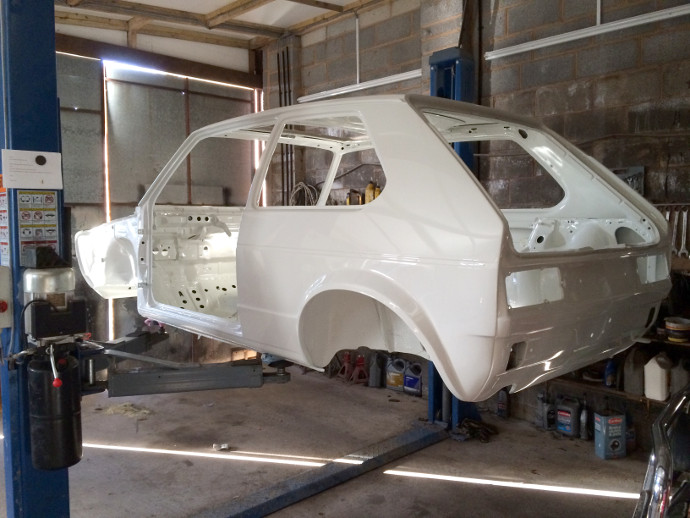

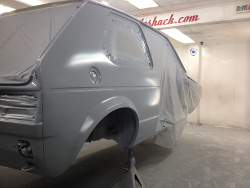
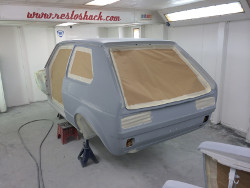
VWH: So you’ve worked on quite a few Mk1 Golfs?
RS: Yes – perhaps the most memorable Mk1 would be Matt’s 1983 GTi. Rarely do you get a customer say the aim of the build is a ‘zero miles’ look. As if it were pulled out of a vault at Volkswagen. Many people do this to Beetles and Campers but watercooled Dubs tend to see more mods than resto. We’ve also rebuilt an original black Campaign GTi with the Bilstein sport pack suspension from the factory, Turbo Technics conversion and a full Zender bodykit as well as a variety of other period mods.
VWH: What, in your opinion, are the Mk1 Golf’s worst hit areas?
RS: A-pillars go and can be tricky to repair – and if done poorly they will rot out again. Rear arches also present a challenge – some rust, some suffer from hacking to fit bigger wheels or different arches. The spare wheel wells go where they join the back panel – those are in short supply at the moment. Fuel filler panels also rust through, taking the inner arch with it. Many people try and fix the area poorly and end up warping the quarter panel in the process.
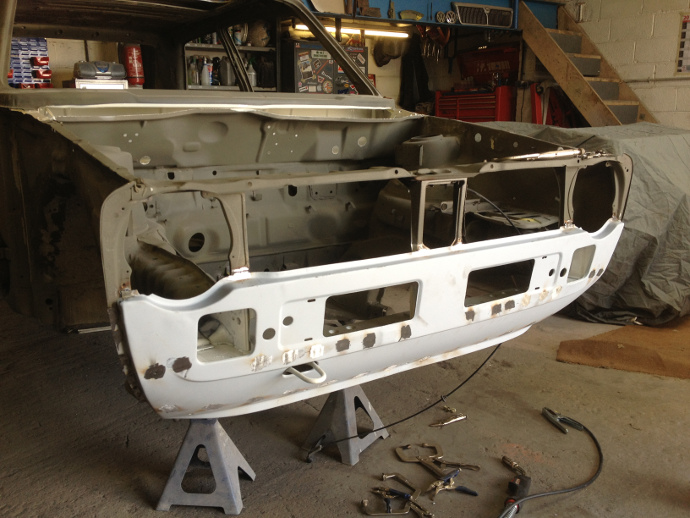
VWH: Can you repair these sections, or can you buy repair panels – what are the main difficulties making these areas good again?
RS: Most panels are available. But spare wheel wells have dried up and there’s no repair for the A-pillars either. Small rear lamp, pre-’79 back panels are a pain as they only make them half way through the lights and you can’t get a ‘75/’76 swallow tail rear panel for love nor money. New rear quarter panels are the most frustrating thing though, as these are no longer available, anywhere. When building a Mk1 if you have to replace arches and sills, the rear quarter panels take a right hammering. A lot of time has to be taken so that you don’t damage the panel welding into it. This is where most people fall down.
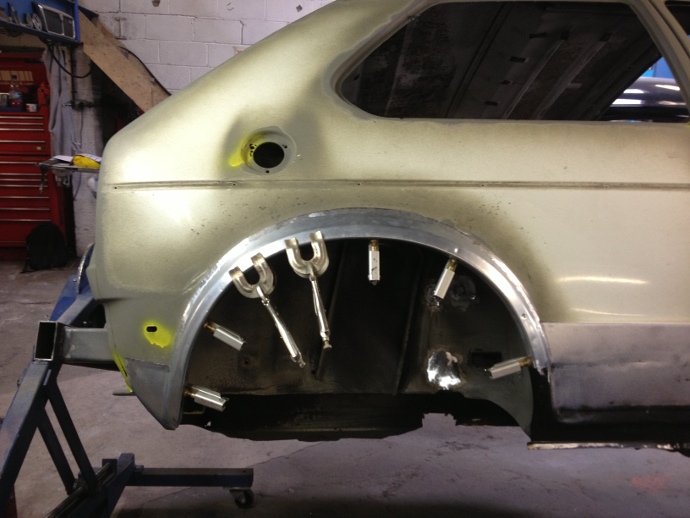
VWH: At what point should you walk away from a rusty Mk1 Golf?
RS: Budget is what drives a restoration. If you can’t afford to fix the car in the state that it is in, then you should walk away. If you take short cuts or compromises you will never be happy with the end result and you’ll think of it as a money pit.
VWH: How do you determine whether to repair or replace when it comes to rusty body panels?
RS: Time and cost really. The best way doesn’t always correspond with the customer’s budgets or needs. We have to find the best route to produce the repair that we are happy to have our name on, but also not bankrupt the customer.
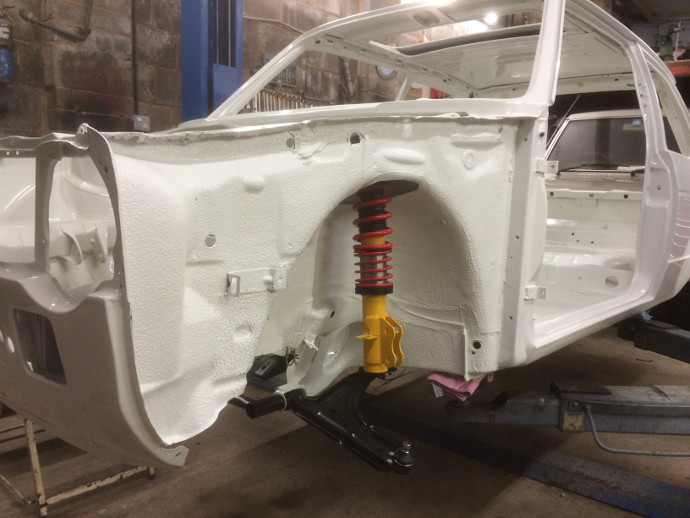
VWH: What is the secret when it comes to treating existing rust on a Mk1 Golf body?
RS: Remove it. It’s like a cancer. Blasting/acid dipping and the old faithful cutting wheel all come into play here.
VWH: What’s your top tip to get a really good paint finish? Is it all down to preparation?
RS: Yes, it’s all in the prep. The most important layer is the first, be it a filler primer/etch or epoxy primer. Everything is built on top of that, like a house of cards. Top level products and equipment will get you far, but real attention to detail and patience will get you the best results. Know your product well and don’t make them work harder than they need to. Make sure everything is correct before moving to the next layer/product or process. Lastly, keep it all clean and dry at all times. An open bodywork process is like a wound begging to suck in anything that will cause you an issue a day, a week or a year down the line.
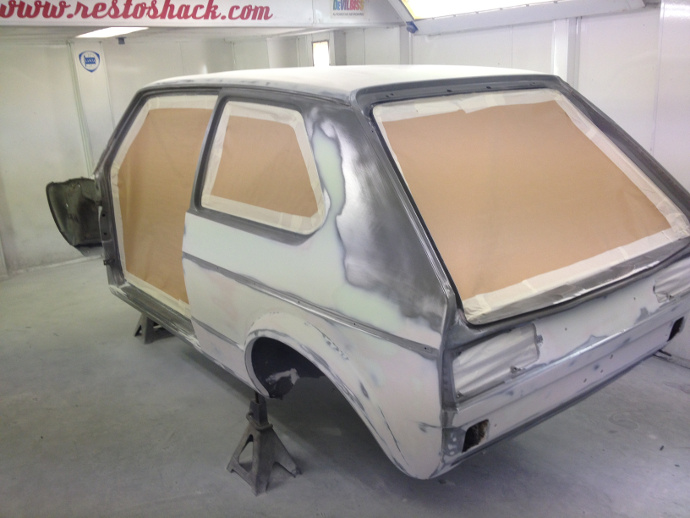
VWH: As a body expert, what’s your most used tool or piece of equipment?
RS: Your mind. It sounds a bit corny, but you have to be on top of where you are with the job. Have all the products waiting for the next stage. You should know every inch of the car and every issue that needs your attention. I still get nervous the night before a big paint job…
VWH: Finally, is there still scope for using filler?
RS: Yes, we use filler. There are many forms, each of which has a specific job to perform. We also use the traditional pre-filler process of lead loading (metal finishing) but this is very expensive and normally only applicable to high value cars such as 911s where the cost of the car far outweighs the cost of the repair. Filling a car inches thick is wrong. That’s a job best left to the metal shop, not the body shop. That said, a few millimetres of product to ensure a ripple free reflection is perfectly acceptable.
Ian
The opinions expressed here are the personal opinions of the author and do not necessarily represent the views and opinions of VW Heritage


I have a vw mk5 2 litre bought for me by my son 7 years ago. Want to do some work which will turn heads. Not sure what but for me looks is everything. It has a brilliant engine even with 200.000 miles on the clock, don’t laugh you would not think so the way it drives. I love this car and it not for sale at any price. I don’t really have a budjet as far as cost goes. Must have a wide body kit. Wheels and low profiles a must paint job too be off the hook. The engine must be more than the average. I don’t want a new engine just adjusted with parts and expertise to be fast but pleasent to the ear. I can’t explain everything in a message but I’d be happy to talk to whoever is in charge of development’s. I found you on the Internet as I had know idea where too look for what I have described. I look forward to your reply.
Mr R Morgan.
Dear Sir I have looked at your website and I would like you to get back in contact with me because I want my Mk1 Golf Driver 1983 restoring kind Regards Guy Reynolds
I just bought a early westy 5 door, any helpful suggestions?
Can anyone help me. Does anyone know how to dismantle part (Complete Rear Panel 191813301H > Golf Mk2) off my Golf Gti Mk2